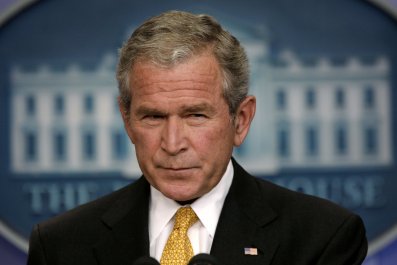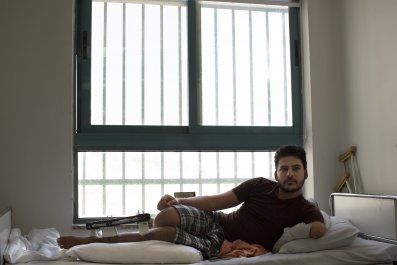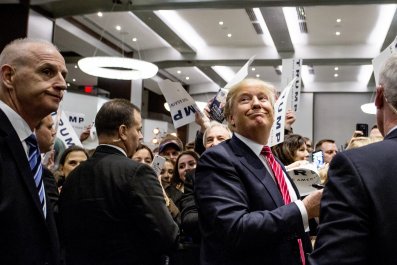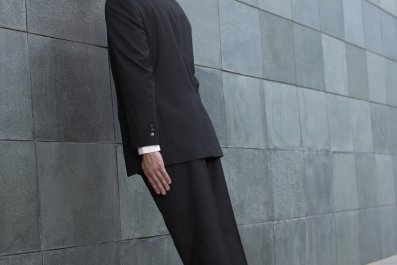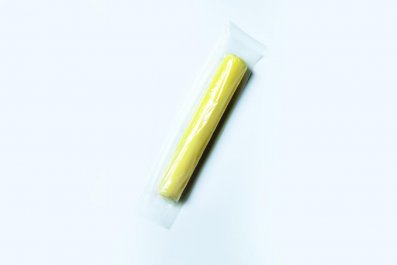The best subjects for documentaries are the famous and the mad, the first not noticing the cameras are there and the other always imagining that they are. Ron Howard's new documentary about the height of Beatlemania, The Beatles: Eight Days a Week—The Touring Years, provides ample reasons why membership in one club often ends up turning into membership in the other.
The documentary begins on the eve of the band's U.S. breakthrough in 1964, as they released "I Want to Hold Your Hand," and accompanies them on the hectic global sprint that followed, playing 815 gigs in 15 countries, from Manila in the Philippines to San Francisco, with the boys swept from the stage in the back of meat wagons. "By the end, it became quite complicated, but at the beginning things were really simple," Paul McCartney says cheerfully. This gives Howard the tonal cue for his doc, a bouncy greatest-hits album testifying once again to the band's esprit de corps, raucous, seat-of-their-pants live act and Dadaist twitting of the press. He's done for the Beatles what Happy Days did for the music of Buddy Holly and Bill Haley: He's given us a portrait of the 1960s rooted in the clean-cut, wholesome 1950s. Richie Cunningham would approve.
The argument is not without merit. It may cause rock snobs at NME and Pitchfork to tremble with disapproval, but before the Beatles transformed themselves into the greatest studio rock band of all time, they were the original and best boy band, shaped by manager Brian Epstein, who slipped the foursome into their suits and matching haircuts. It aids Howard's case that the band's two most caustic voices, George Harrison and John Lennon, are gone. The best commentators on Beatlemania were always the Beatles themselves.
Touching down at JFK Airport, they have the alienated wit of time travelers, stranded in 1964, the only people on Earth able to marvel at the absurdity of what surrounds them. "Which one are you?" one American pressman asks Lennon. "Eric." Asked to address "40 million American viewers," Lennon peers at the cameraman and says, "It looks like one man to me." Another asks, on the band's designation as members of the Order of the British Empire, "What ambitions have you left?" "I'd like to become a duke."
They were the first band to turn alienation from their fame into its own form of wit, which makes it all the more egregious that Howard hauls out archive material of Lennon grimacing his way through a semi-apology on TV for his "bigger than Jesus" remark, while McCartney pops up as a character witness to testify to the band's "religious upbringing," as if the legions of evangelical dunderheads still needed mollifying. In such moments, Howard's aesthetic timidity reveals itself, as if he were intent on making a film for anyone who tuned in to The Ed Sullivan Show in 1964, fell in love with the four adorable mop tops and regrets all the long-haired plonking about with sitars that came later.
Ignored are all accounts of the band taking LSD and the aesthetic revolution it fomented: All the technical innovations of Revolver are reduced to a single backward tape loop on "Tomorrow Never Knows," while fans of Sgt. Pepper's Lonely Hearts Club Band may be surprised to hear that the album was made while ingesting nothing stronger than multiple cups of tea. Here instead is the American TV journalist Larry Kane to give you his take on what it was like to be teased by Lennon—thanks for sharing, Larry!—and to dish on his marijuana use, along with the British comedian Eddie Izzard to reassure us that the Beatles' wit was not "aggressive" but "brazen." Both are among a number of perplexingly random talking heads, including Whoopi Goldberg, Sigourney Weaver and Richard Curtis, all of them yanking you out of period like a dose of smelling salts. They're not a patch on the archival footage of real fans, declaring their love plaintively on the streets of Brooklyn and Queens.
If you want to know what Beatlemania looked like from the inside, treat yourself to the immersive vérité of the Maysles brothers' What's Happening! The Beatles in the USA, a 1964 documentary that puts you on the ground with the Beatles in their hotel rooms, killing time while the world goes mad around them. Howard's movie climaxes with an account of the band's 25-city stadium tour of America, by which time they could barely hear themselves play over the screams. Howard doesn't mention it, but by then Harrison actually feared assassination—one of the few instances in which behind-the-music social context would have worked. The director diligently patches in footage of John F. Kennedy, civil rights marches and Vietnam, but as McCartney sheepishly admits, "We were too much in our heads being a band." Inside the Beatles' heads, of course, was and still is a fascinating place to be: a revolution mirroring all the ferment of the late 1960s.
Those wishing a more penetrating understanding of the Beatles' retreat from the klieg lights will have to turn to Martin Scorsese's magnificent 2011 documentary on Harrison for HBO, George Harrison: Living in the Material World. Scorsese dared to take seriously the one thing potentially most absurd about the band: their spirituality. That is where Howard's film ends, with the resounding piano chord that ends "A Day in the Life" on Sgt. Pepper's, the album that marked their full retreat from live performance into the studio, where they deconstructed their pop fame and rechanneled Beatlemania back into the ether. In truth, they were just getting started.
The Beatles : Eight Days a Week—The Touring Years is in cinemas in selected countries now; further releases continue to October 13.







